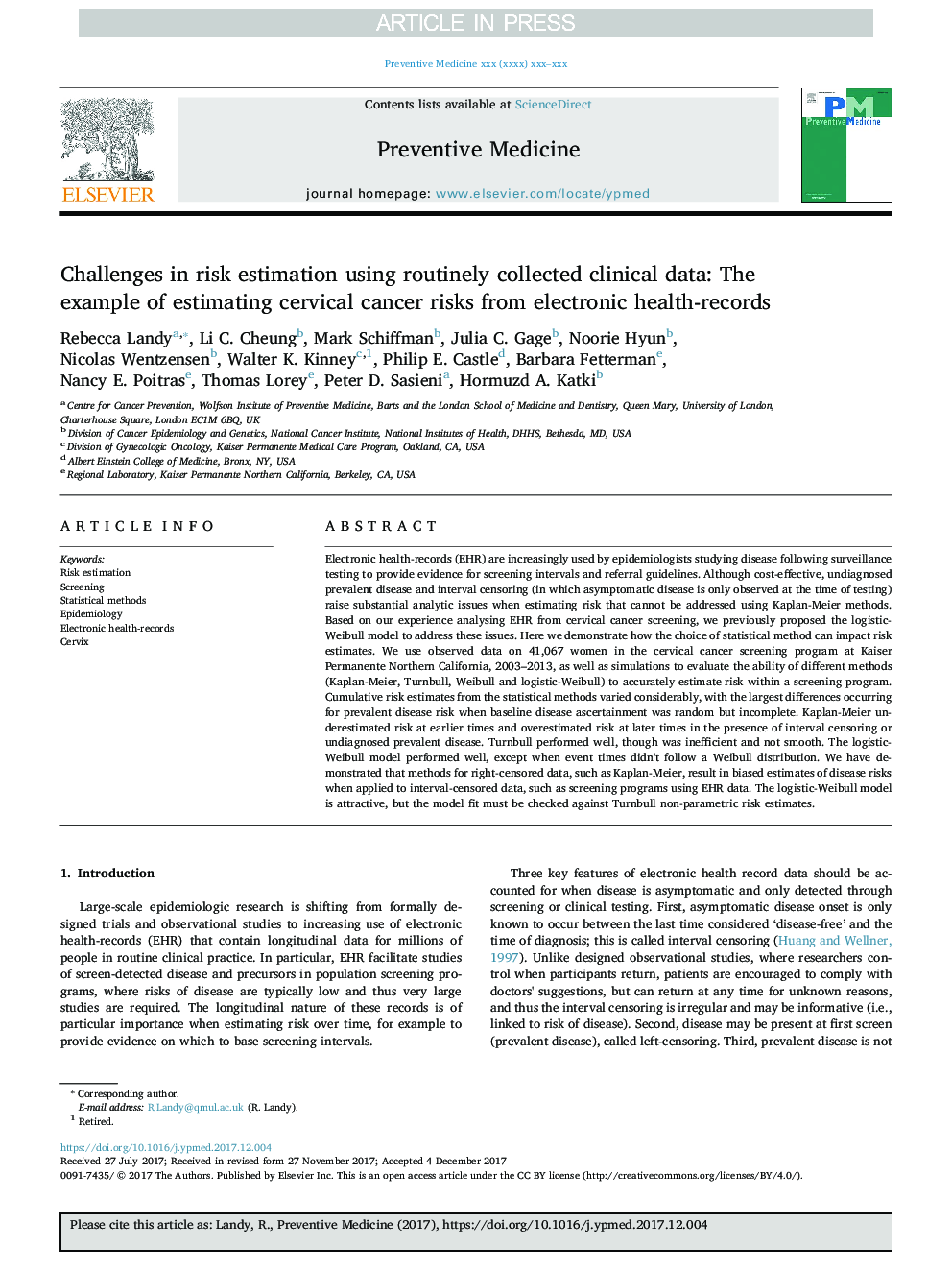| کد مقاله | کد نشریه | سال انتشار | مقاله انگلیسی | نسخه تمام متن |
|---|---|---|---|---|
| 8693620 | 1581601 | 2018 | 7 صفحه PDF | دانلود رایگان |
عنوان انگلیسی مقاله ISI
Challenges in risk estimation using routinely collected clinical data: The example of estimating cervical cancer risks from electronic health-records
ترجمه فارسی عنوان
چالش های برآورد ریسک با استفاده از داده های کلینیکی به طور موقت جمع آوری شده: مثال برآورد خطر سرطان گردن رحم از پرونده های الکترونیکی سلامت
دانلود مقاله + سفارش ترجمه
دانلود مقاله ISI انگلیسی
رایگان برای ایرانیان
کلمات کلیدی
برآورد خطر، غربالگری، روش های آماری، همهگیرشناسی، سوابق بهداشتی الکترونیکی، دهانه رحم،
موضوعات مرتبط
علوم پزشکی و سلامت
پزشکی و دندانپزشکی
طب مکمل و جایگزین
چکیده انگلیسی
Electronic health-records (EHR) are increasingly used by epidemiologists studying disease following surveillance testing to provide evidence for screening intervals and referral guidelines. Although cost-effective, undiagnosed prevalent disease and interval censoring (in which asymptomatic disease is only observed at the time of testing) raise substantial analytic issues when estimating risk that cannot be addressed using Kaplan-Meier methods. Based on our experience analysing EHR from cervical cancer screening, we previously proposed the logistic-Weibull model to address these issues. Here we demonstrate how the choice of statistical method can impact risk estimates. We use observed data on 41,067 women in the cervical cancer screening program at Kaiser Permanente Northern California, 2003-2013, as well as simulations to evaluate the ability of different methods (Kaplan-Meier, Turnbull, Weibull and logistic-Weibull) to accurately estimate risk within a screening program. Cumulative risk estimates from the statistical methods varied considerably, with the largest differences occurring for prevalent disease risk when baseline disease ascertainment was random but incomplete. Kaplan-Meier underestimated risk at earlier times and overestimated risk at later times in the presence of interval censoring or undiagnosed prevalent disease. Turnbull performed well, though was inefficient and not smooth. The logistic-Weibull model performed well, except when event times didn't follow a Weibull distribution. We have demonstrated that methods for right-censored data, such as Kaplan-Meier, result in biased estimates of disease risks when applied to interval-censored data, such as screening programs using EHR data. The logistic-Weibull model is attractive, but the model fit must be checked against Turnbull non-parametric risk estimates.
ناشر
Database: Elsevier - ScienceDirect (ساینس دایرکت)
Journal: Preventive Medicine - Volume 111, June 2018, Pages 429-435
Journal: Preventive Medicine - Volume 111, June 2018, Pages 429-435
نویسندگان
Rebecca Landy, Li C. Cheung, Mark Schiffman, Julia C. Gage, Noorie Hyun, Nicolas Wentzensen, Walter K. Kinney, Philip E. Castle, Barbara Fetterman, Nancy E. Poitras, Thomas Lorey, Peter D. Sasieni, Hormuzd A. Katki,
